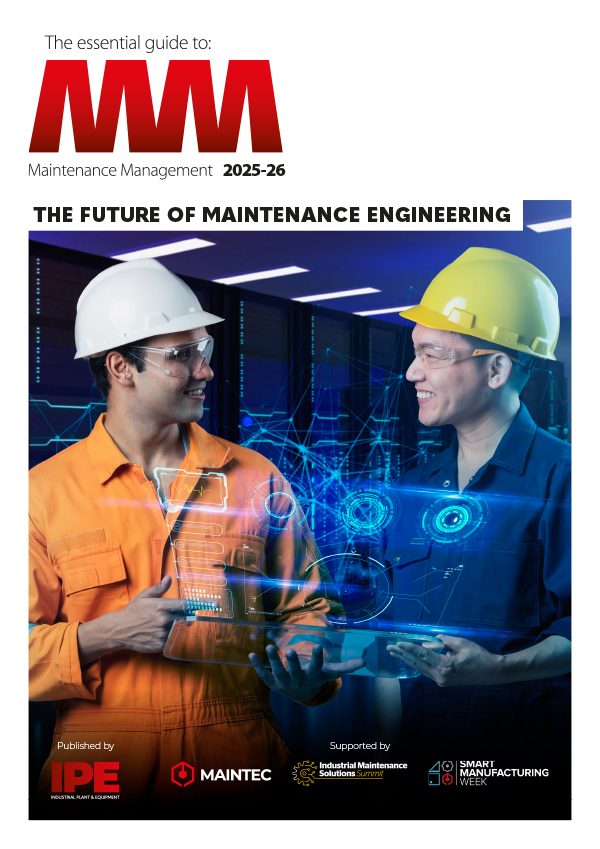

|
Edward Lowton
Editor |


|
| Home> | Plant, Process & Control | >Sensors and instrumentation | >Making your ATEX Zone 2 less painful |
Making your ATEX Zone 2 less painful
30 July 2025
Operating in ATEX Zone 2 environments often presents unique challenges, but smarter solutions can significantly reduce complexity, improve safety, and lower lifetime costs, says Tony Coghlan

WORKING IN ATEX Zone 2 environments presents a unique paradox: for the majority of the time, these areas function like any other part of the factory, yet they demand special precautions and equipment to manage the rare risk of an explosive atmosphere.
What is Zone 2 and why is it painful?
This isn’t meant as an education into ATEX zones, just a simple and brief background to the article. There are three ATEX zones for Gas and three for Dust.
- Gas Zone 0 has the highest risk level, where an explosive atmosphere is continuously present, or present for long periods (more than 1000 hours per year).
- Gas Zone 1 has a moderate risk, where an explosive atmosphere is likely to occur during normal operation (10 to 1000 hours per year).
- Gas Zone 2 has the lowest gas risk, where an explosive atmosphere would only occur under abnormal conditions (less than 10 hours per year).
Dust zones are 20, 21 and 22 and have similar definitions to gas, but for an explosive dust cloud.
The reason I describe it as painful is that for at least 99.9% of the time, or 8750 hours per year, the area is perceived as just like any other non-hazardous area in the factory. However, special precautions have to be taken whenever that equipment is used, maintained or introduced to the area. This equipment costs more to purchase and maintain and typically takes longer to do.
While no-one thinks that special precautions in the higher zones are not required, to use an analogy of a domestic kitchen with a situation similar to a Zone 2, e.g. a gas leak, would you search for the leak in your house with a match?
How can we make it less painful?
The best solution would be to change the conditions and remove the risk so that the area could be declassified. However as this is rarely possible or practical, what else can we do?
The use of non ATEX equipment in a suitable Zone 2 certified enclosure may well reduce the initial cost of the equipment but this is false economy.
The more sensible thing to do is to use products designed for use in Zone 2 which don’t require any enclosure, can be mounted directly to the machine and use plug-in connectors everywhere. This can reduce maintenance costs enormously.
Eliminating Enclosures for Greater Efficiency
The elimination of enclosures makes access far easier, with a gas-free certificate no longer required, to confirm that there is no explosive atmosphere before the cabinet can be opened.
The use of quick disconnect connections ensures that a product can be replaced with no subsequent need for extensive electrical testing. Wiring terminals, as well as being the point of failure when replacing any product, also take far longer to repair. Typically a wiring terminal takes 5 – 15 minutes per connection, requires tools (screwdriver, torque wrench, wire strippers, ferrules) and has a high risk of miswiring, loose connections and broken wires. A quick disconnect plug and socket takes between 30 seconds and 2 minutes per plug, requires no tools and eliminates misconnections.
Turck Banner's extensive range of products covers all ATEX zones and non-hazardous areas. They can provide everything from the sensor and interconnecting cables to PLCs and fieldbus products for hazardous areas.
Turck Banner’s parent company Turck are the market leaders in IP67, IP68 and IP69K fieldbus products designed to be mounted directly onto the machine.
How Direct Machine Mounting Reduces Complexity
The ability to mount products directly on the machine, close to where they are needed, makes tooling changes simple or allows for machine modules to be relocated to other production lines as needed.
Mounting directly on the machine can expose the part to more extreme temperatures and physical abuse than would be encountered within a cabinet, so to combat these extremes the products have robust, often metal, housings and wider operating temperature ranges. These include the TBEN range of Multiprotocol, digital I/O modules, with ATEX Zone 2/22, cULus, IECEx and CCC approvals, IP65/IP67/IP69K Protection class and a working temperature range of -40 to +70 °C, or the IMC isolating barriers. Turck Banner also provide a bracket for the TBEN and IMC to ensure that there is no unintentional removal of connections, fulfilling both the requirements of Zone 2 and providing extra protection to the cables.
Preparing for Global Conditions
This environmental robustness is also a huge benefit to companies who supply their equipment worldwide for use anywhere from the tropics to the arctic, and from clean rooms to quarries or refrigeration units.
Turck are also the only company to produce safety remote I/O modules for Zone2/22, have a SIL3 rating and designed to be mounted directly on the machine where they are needed, with IP65, IP67, IP69K protection class, a working temperature range of -40 to +70°C , CIP safety and Profisafe protocols.
For those who embrace the Zone2/22 remote IO concept we can ease the pain points with easier maintenance, faster time to market, more flexibility with modular machines and a reduction in costs over the lifetime of the machine.
Tony Coghlan is MD at Turck Banner
For more information:
Tel: +44 (0) 1268 578888
- LEDs: Approached from a different angle
- Choosing a precision measurement sensor
- Turck Banner unveils sustainability initiative
- Do you know what is in your warehouse and where it is now?
- Versatile tower light range
- Monitoring, maintenance and IIoT
- Cloud-based remote machine maintenance
- Energy efficient and long-lasting
- Long lasting and energy efficient
- Daylight visible


















